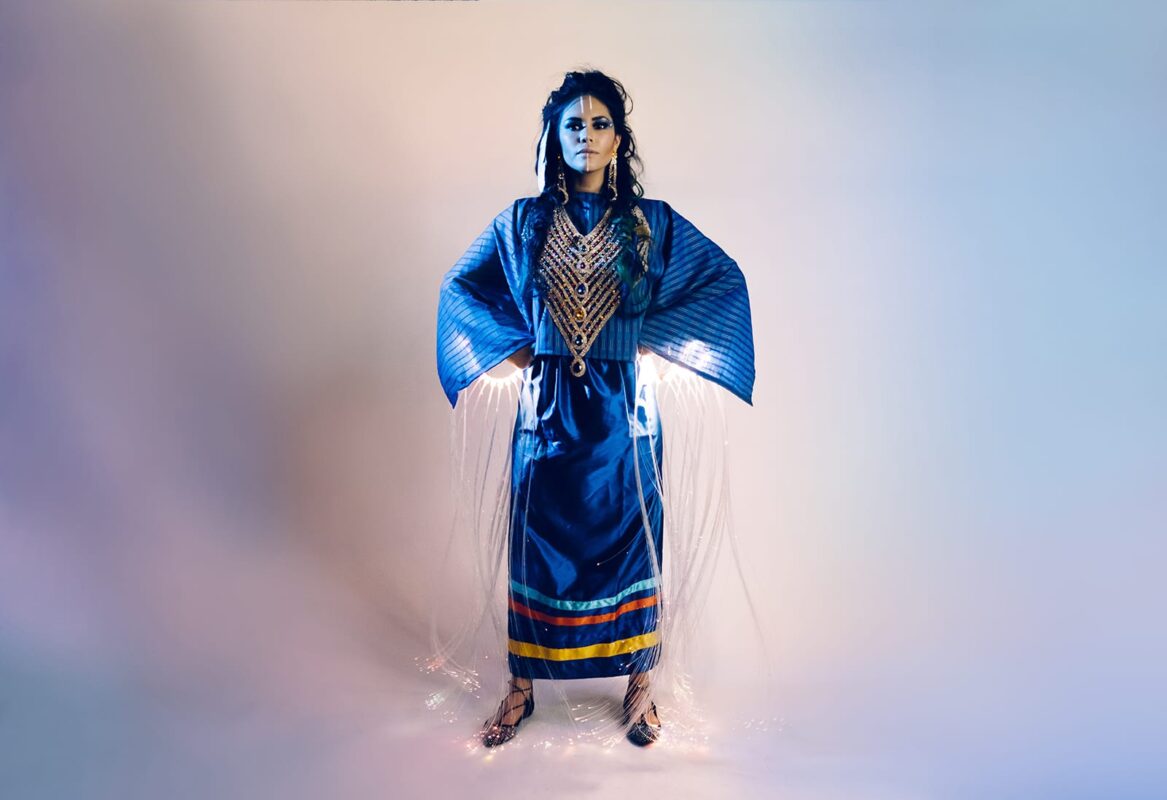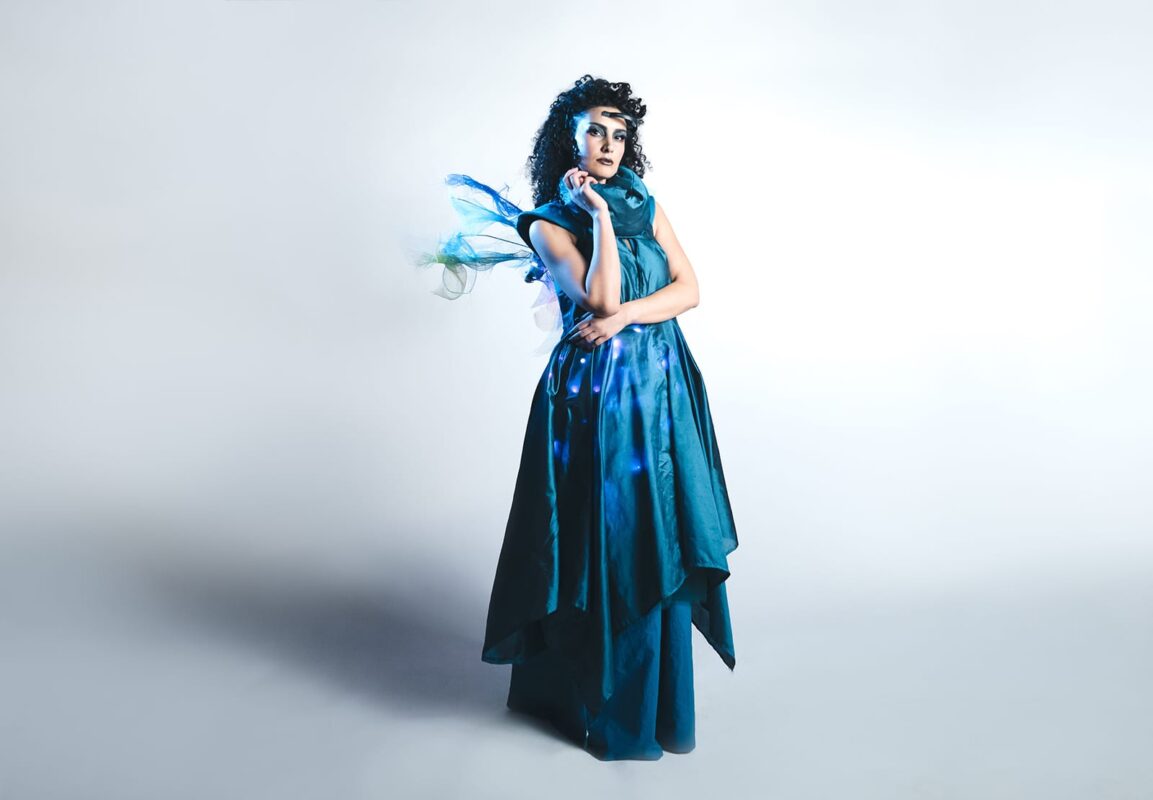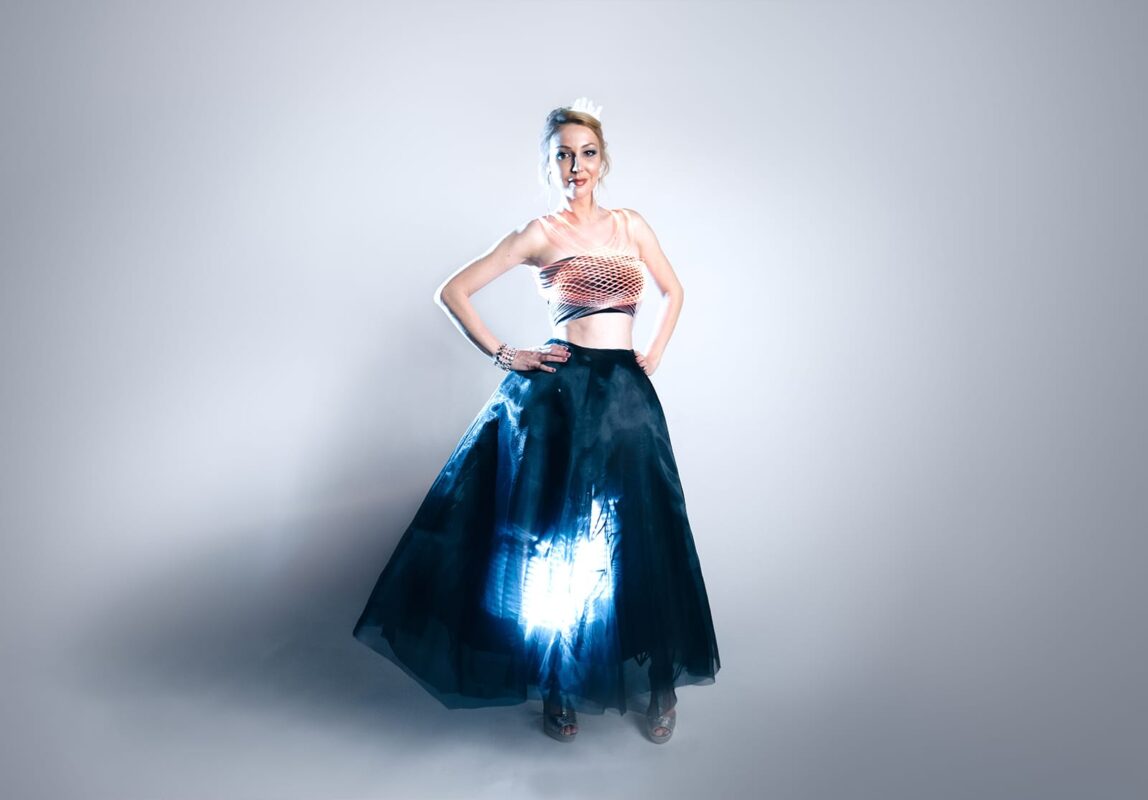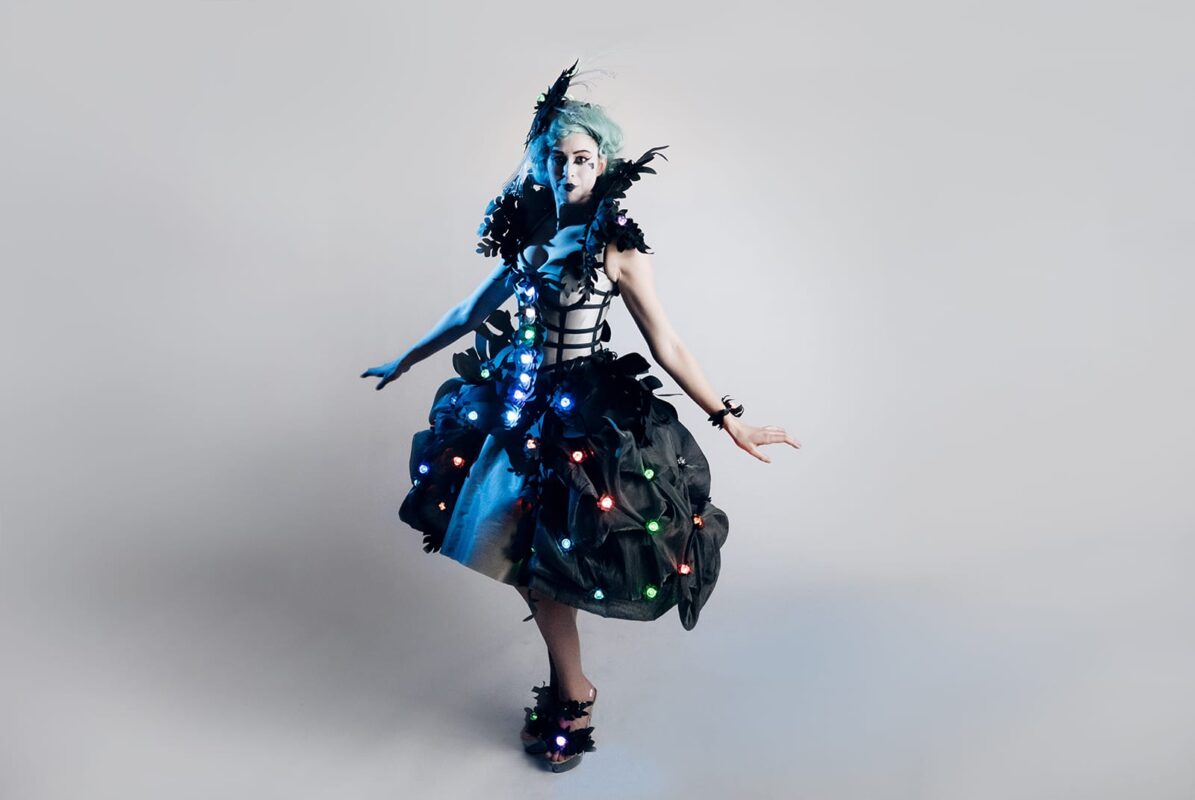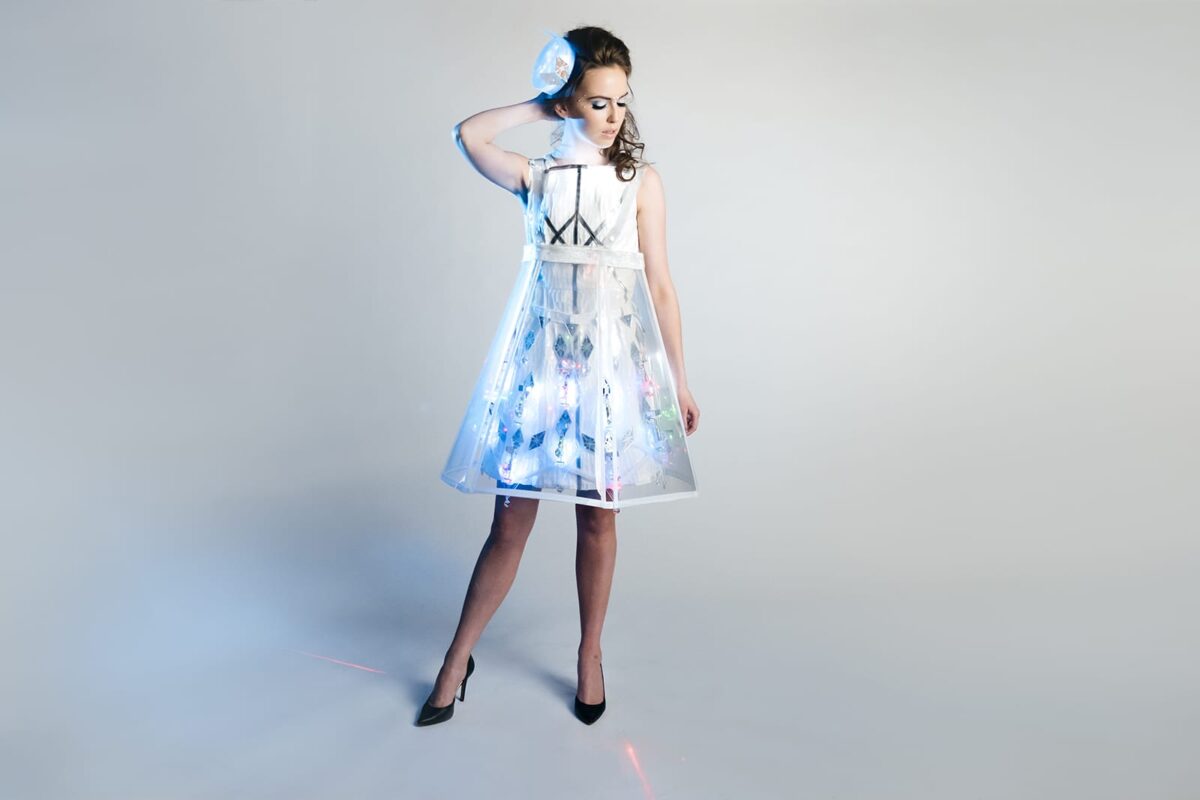Fashion Tech at its core is about more than LED lights and sensors on garments. It is about using fashion and technology as a means of telling a story or expressing who we are. When a garment is led by design, a story is typically told through performance and is often connected to a specific culture, with technology being used to highlight and bring to light heritages and tradition that may have been forgotten.
As technology is quickly becoming smaller and smarter, it will become a part of our everyday clothing, augmenting our lives and the fundamental meaning of human experience. This is already occurring with fitness trackers for example, which are influencing global health habits. For the past six years, MakeFashion has focused on this augmentation of human expression, enabling fashion designers, artists, and engineers around the world to collaborate in creating stunning and inspired fashion tech garments, some of which have received major international attention and recognition. Having produced over 40 runway shows and been a part of private runways around the world, from Shenzhen, Shanghai, Dublin, Berlin, to San Francisco, Nashville, Toronto and Calgary, MakeFashion has seen fashion tech grow and evolve, observing its changing perception in both the tech and fashion worlds.
I have been fortunate enough over the last few years to observe the fascinating process in which designers and artists collaborate with engineers, blending their combined skills and knowledge to create fashion tech garments that are breathtaking and push the limits. Without this combination of two seemingly disparate areas, many of the most amazing pieces I have seen would not be possible.
Ultimately, fashion technology is becoming an ideal medium to use technology to augment certain emotions or denote specific social situations. Designer Erina Kashihara explored social interactions in a public setting through her garment called Double Vision. The garment played with the notion of human interaction and hiding certain aspects of our persona when we first meet a new person or group of people. The wearer can control the garment’s appearance by tapping on different areas of the dress, subtly revealing (or hiding) the technology underneath.
Other cutting-edge technologies, such as EEG headsets, are used by designers to continue to blur the lines between fashion and technology. Kathryn Blair uses EEG headsets to capture brainwave information from the brain and uses fashion as her means of expression. Her last garment, Automata, interacted with members of the audience. She used an audience-worn EEG headset to visualize information on her garment, using light and the movement of a specially-designed mechanical harness worn by a model on the runway.
While fashion tech is not yet ready to appear in retail stores and on your shelves yet, it is fast becoming the vehicle to shape the direction fashion, technology, and even wearables, is heading towards. Converging the two worlds of fashion and technology has certainly been a challenge, but there is a definite need to push the boundaries of design.
In MakeFashion, we hack the runway, allowing design and engineering to collaborate. People from different backgrounds, cultures, and experiences work together meaningfully in a shared story, creating garments that push the limits of existing technology. It is the blurring of these two worlds, not just in the context of fashion tech, that allows for global innovation.
Written by Maria Elena Hoover
Email: maria@makefashion.ca
Twitter & Instagram: @mayviva
Facebook: @mayhoover

